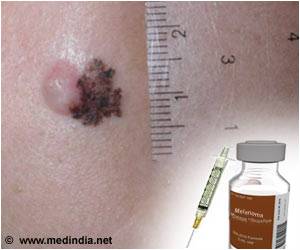In the U.S, more than 87,000 cases of melanoma are diagnosed year. Scientists have improved the techniques to detect the amelanotic melanoma in people.

‘Individuals who lack moles on their backs, who are sun-sensitive and have many freckles are at risk of developing amelanotic melanoma.’





"Amelanotic melanoma is linked to worse survival because it's more likely to be diagnosed at a later stage," said the study's senior author Nancy E. Thomas, MD, PhD, a UNC Lineberger member, the Irene & Robert Alan Briggaman Distinguished Professor and chair in the UNC School of Medicine Department of Dermatology. "We have identified phenotypic traits that will trigger doctors and patients to pay attention not just to pigmented lesions, but also to these pink spots."
The American Cancer Society estimates more than 87,000 cases of melanoma will be diagnosed in the United States this year. Melanoma accounts for only about one percent of skin cancers, but it causes a large majority of skin cancer deaths.
About 2 to 8 percent of melanomas are amelanotic, studies have shown. These skin cancers are seen predominately in white patients, and develop as pink growths. A 2014 study led by UNC Lineberger researchers found that amelanotic melanoma was typically diagnosed at more advanced stages than pigmented melanoma, and that the risk of death was higher.
Amelanotic melanoma can evade detection because it falls outside a commonly used diagnostic criteria.
Advertisement
"Using these diagnostic criteria, a dermatologist might miss this type of melanoma because it not only lacks the color, but its irregular borders and asymmetry may also be harder to detect," Thomas said.
Advertisement
The researchers analyzed the characteristics of 178 patients with this disease drawn from a study of 2,995 melanoma patients enrolled in The Genes, Environment, and Melanoma study. The international study enrolled patients from 1998 to 2004.
They found that people who lacked moles on their backs, who had many freckles, and "sun-sensitive" features including red hair, light-colored eyes and an inability to tan had higher odds of developing amelanotic melanoma.
In addition, people who previously had this disease were at higher risk, as were people who had variants of the MC1R gene that are linked to red hair.
"If patients have these traits, they need to be more carefully screened," Thomas said.
"We hope this helps raise awareness for the potential for amelanotic melanoma in this group."
Source-Eurekalert














